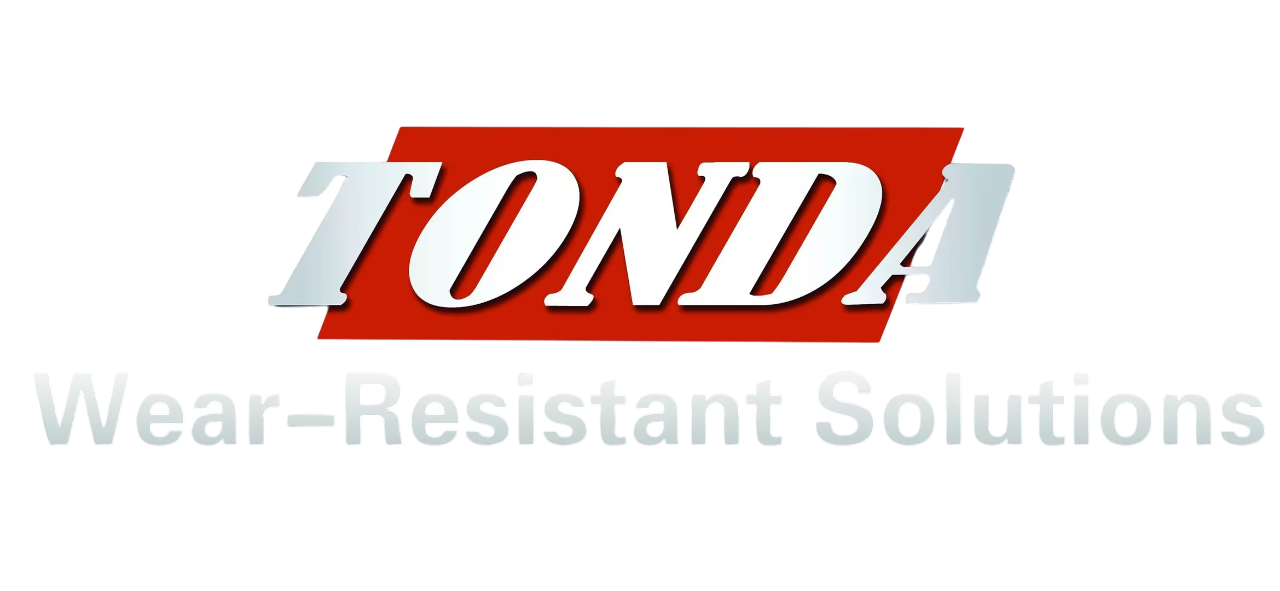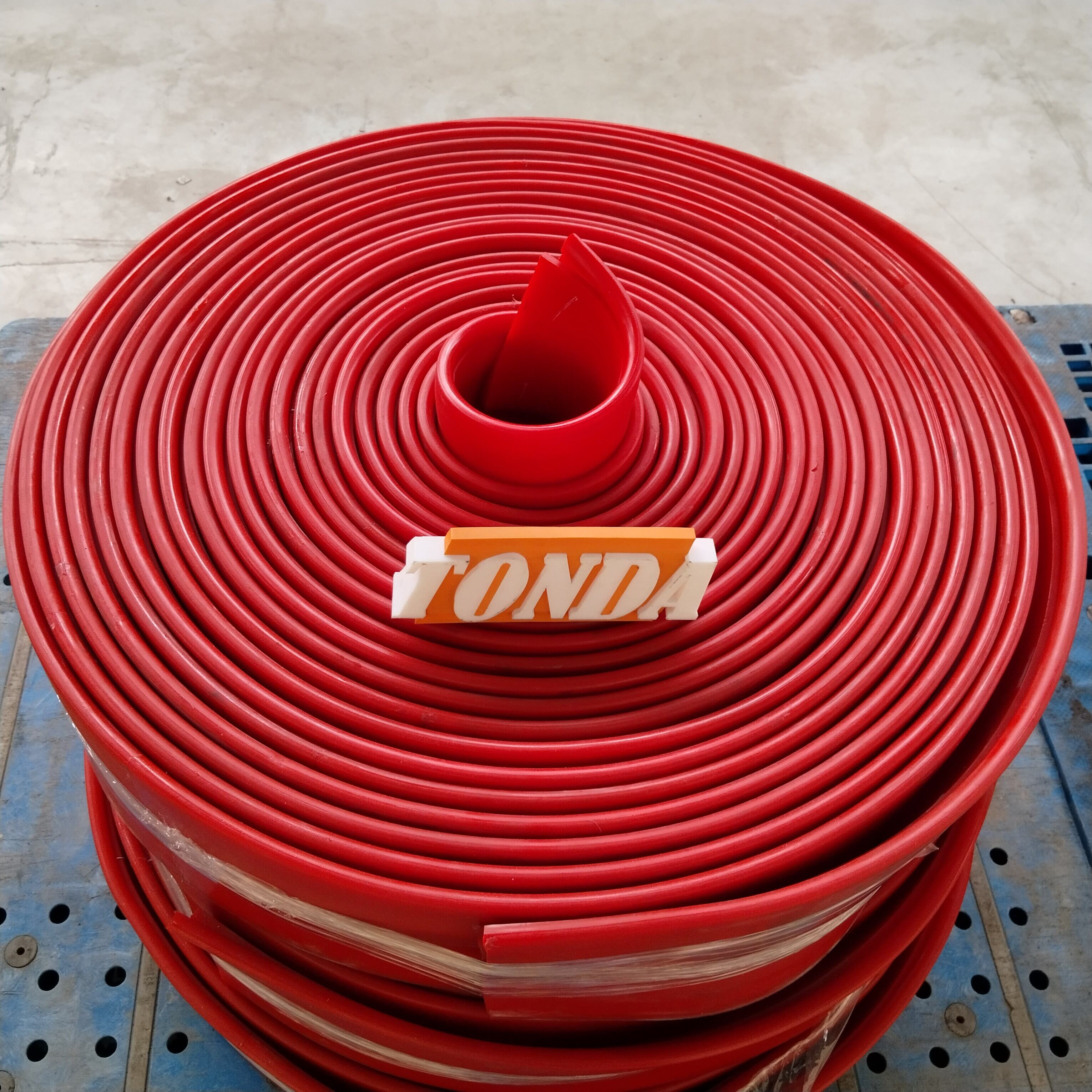Why Urethane Conveyor Skirtboard Sealing Is Critical for High-Speed Packaging
Understanding Urethane Conveyor Skirtboard Sealing and Its Functional Importance
The urethane conveyor skirtboard system works as a kind of flexible shield between the constantly moving belt and whatever isn't moving around it, stopping stuff from spilling out even when the belt moves around a bit. Polyurethane has this special property at the molecular level that makes it stretchier than other hard materials we've tested, giving about 28% more give according to recent material testing reports. What this means in practice is the seal stays in place properly without creating too much drag on the system. We've seen these seals cut down on airborne dust particles by nearly 92% in food processing facilities where cleanliness matters most. For companies working in regulated environments, this kind of dust control goes a long way toward staying within those strict OSHA standards for worker safety regarding particulate matter exposure.
How High-Speed Packaging Conveyors Demand Advanced Sealing Solutions
Packaging lines running at speeds over 120 feet per minute deal with constant pounding from off-center products and sudden temperature changes throughout their operation cycle. Standard rubber skirts just can't keep up in these harsh environments, breaking down about three times quicker because they get rock hard when exposed to heat over time. Urethane materials tell a different story though. After putting them through the wringer for around 10,000 hours on actual production floors in bottling plants, tests showed they maintained nearly all their initial flexibility measurements. What does this mean for real world operations? Facilities using urethane components reported cutting unexpected shutdowns by almost 20% in both pharmaceutical manufacturing setups and those massive warehouses handling online orders day after day.
Comparative Durability of Urethane vs. Rubber and PVC in Dynamic Sealing Environments
- Abrasion resistance: Urethane withstands over 14,000 Taber cycles, far exceeding rubber’s 4,500-cycle limit
- Chemical compatibility: Resists oils and sanitizers that degrade PVC by 37% within six months
- Tear strength: With 22 MPa tensile strength, urethane resists split propagation during jam events
Plant managers report 78% longer replacement intervals after switching to urethane seals, reducing spillage-related cleanup costs from $18,000 to $4,200 annually (Packaging Operations Benchmark 2023).
Material Science Behind Urethane's Superior Sealing Performance
Molecular Resilience of Polyurethane in High-Friction Conveyor Applications
Polyurethane’s crosslinked molecular structure provides exceptional energy absorption in high-speed systems. It maintains elasticity even under 450 fpm belt speeds, reducing wear-inducing vibration by up to 40% compared to rubber (Mechanical Engineering Journal, 2023). This resilience enables urethane to endure over 15,000 compression cycles without permanent deformation in ASTM D395 testing.
Tear Resistance and Abrasion Metrics for Industrial-Grade Urethane Seals
Industrial urethane seals offer 6,000 psi tensile strength–triple that of standard nitrile rubber–while sustaining a 450% elongation rate. In packaging applications, this translates to 78% fewer seal replacements over 18 months, according to wear resistance testing by Applied Polymer Group. Key performance metrics include:
- 0.08 mm³ abrasive wear loss (versus 0.33 mm³ for PVC)
- Peak operating temperature tolerance of 180°C
- Static coefficient of friction at 0.35, optimizing particulate deflection
Custom Durometer Ratings for Optimized Urethane Conveyor Skirtboard Sealing
Engineers select urethane hardness between 60A and 90A on the Shore scale to balance sealing force and drag resistance. A 2023 case study found that 75A urethane reduced energy consumption by 11% compared to 85A formulations, while keeping material spillage below 0.5%. Custom compounding enhances performance through:
- 15–30% mineral-filled composites for food-grade safety
- UV-stabilized polymers for cold-chain conveyors
- Oil-resistant formulations for automotive parts handling
Design and Integration: Building Effective Urethane Skirtboard Sealing Systems
Precision Fitment and Compression Dynamics in High-Speed Systems
Effective urethane conveyor skirtboard sealing starts with precision engineering. High-speed lines require seal profiles within ±0.8 mm dimensional accuracy across conveyor joints, preventing leakage even at belt speeds above 3.5 m/s. Polyurethane’s compressibility allows 15–20% deflection under load, absorbing vibration while maintaining the critical 3:1 compression ratio for reliable dust containment.
Integration With Conveyor Skirting Hardware: Clamps, Brackets, and Tensioners
Today's conveyor systems combine urethane skirts that stick together through chemical bonding with heavy duty steel clamps designed to spread pressure evenly along the entire width of the conveyor. These systems also feature spring loaded tension brackets which help deal with thermal expansion issues when temperatures fluctuate over wide ranges, sometimes as much as 40 degrees Celsius. What this means is that these brackets keep around 18 to 22 Newtons per meter of pressure consistently applied to the edges of the belts throughout their operation. According to field research conducted in actual industrial settings, when all these components work together properly, there's a significant reduction in early wear at those critical mounting points where problems typically start. The numbers tell the story pretty clearly too - we're talking about a roughly 62 percent decrease in premature damage compared with traditional bolted design approaches.
Balancing Performance and Cost: Avoiding Over-Engineering While Ensuring Longevity
Urethane sealing works best when operations match the right durometer rating to what they're actually dealing with. Most applications fall somewhere between 85A and 95A on the hardness scale. Softer stuff is better for those delicate packaging jobs where things might get scratched, while the harder versions hold up against rougher bulk materials. Companies often waste money adding extra wear resistance when it's not needed at all. Standard polyurethane seals can last well beyond 25,000 hours even in food processing environments. That's why many plants start small first. They test out new seals at key transfer points where problems tend to happen most frequently before rolling them out across the entire production line.
Real-World Impact: Case Studies in Urethane Sealing Efficiency
Modern urethane conveyor skirtboard sealing delivers measurable gains across high-speed operations. Three facilities illustrate transformative results:
Beverage Packaging Line Reduces Spillage by 78% After Urethane Seal Retrofit
At a beverage factory in Germany, switching from standard rubber skirting to tough urethane seals that can handle 4.5 meters per second on conveyors cut down on wasted product by almost 18 tons each year. When they used thermal cameras to check things out, they found the temperature at those seal points dropped by around 52 degrees Fahrenheit, which means there was definitely less friction happening. According to industry reports from late 2023, overall production line efficiency went up about 14 percent over just six months after making this switch. The Food Processing Equipment Survey folks have been tracking similar improvements across several facilities recently.
Pharmaceutical Manufacturer Achieves FDA Compliance Through Closed-Loop Urethane Sealing
A contract drug packager resolved recurring particulate contamination by installing non-porous urethane seals certified to NSF/ANSI 61 standards. The closed-loop system maintained ISO Class 7 cleanroom integrity through more than 800 hourly start-stop cycles, demonstrating resistance to CIP sanitizers.
Automated Distribution Center Doubles Seal Lifespan Using Custom-Formulated Urethane
After weekly seal failures disrupted parcel sorting, a logistics hub collaborated with a polymer engineer to develop 95A durometer urethane seals reinforced with carbon fiber. These endured 1.2 million compression cycles before exceeding 0.5 mm wear–2.3 times longer than previous PVC skirting–validated in a 2024 Material Handling Institute trial.
Installation, Maintenance, and Future Trends in Urethane Sealing Technology
Proper installation and proactive maintenance are essential for maximizing the efficiency of urethane conveyor skirtboard sealing in high-speed packaging environments. As operations evolve, so too must sealing technologies to meet emerging demands.
Step-by-Step Guide to Installing Urethane Skirtboard Seals on High-Speed Lines
Align the conveyor skirtboard precisely, eliminating gaps larger than 1 mm using laser-guided tools. Install urethane seals with pre-calibrated tensioners to achieve uniform compression–ideally 3–5% deflection. Allow 24–48 hours for full curing based on formulation, ensuring complete molecular bonding before exposing seals to peak loads.
Routine Inspection Checklist for Wear, Misalignment, and Compression Loss
Conduct monthly inspections to measure:
- Seal abrasion depth (replace if thickness loss exceeds 10%)
- Sidewall alignment (maintain within ±1.5 mm tolerance)
- Compression forces (keep between 15–20 psi)
Use feeler gauges to document belt edge gaps; initiate repairs when measurements exceed 0.8 mm.
Predictive Maintenance: Leveraging Sensor Data to Anticipate Seal Failure
Advanced systems use RFID-tagged urethane seals that transmit real-time wear data to analytics platforms. Combining vibration sensors–which detect abnormal friction–with AI-driven lifespan models has been shown to reduce unplanned downtime by 63% (MDpi 2024).
Smart Urethane Seals with Embedded Wear Sensors and IoT Connectivity
Next-generation urethane seals integrate microsensors that monitor:
- Temperature fluctuations (±2°C accuracy)
- Compression deviations beyond 12% of baseline
- Particulate infiltration rates (ml/hour)
This data streams to centralized dashboards, enabling just-in-time replacements and reducing material waste by 41% in pilot implementations.
FAQ Section
What is urethane conveyor skirtboard sealing?
Urethane conveyor skirtboard sealing is a protective shield between the conveyor belt and its surroundings, designed to prevent material spillage and control dust.
Why is urethane preferred over rubber in sealing?
Urethane offers superior durability, flexibility, and resistance to heat and chemicals compared to rubber, making it ideal for high-speed packaging environments.
How is urethane beneficial in high-speed packaging?
Urethane maintains its elasticity and reduces wear-inducing vibration, leading to fewer shutdowns and increased operational efficiency.
What maintenance is required for urethane seals?
Regular inspections for wear and alignment, along with predictive maintenance using sensor data, can help maximize the lifespan of urethane seals.
Table of Contents
- Why Urethane Conveyor Skirtboard Sealing Is Critical for High-Speed Packaging
- Material Science Behind Urethane's Superior Sealing Performance
- Design and Integration: Building Effective Urethane Skirtboard Sealing Systems
- Real-World Impact: Case Studies in Urethane Sealing Efficiency
- Installation, Maintenance, and Future Trends in Urethane Sealing Technology
- FAQ Section

